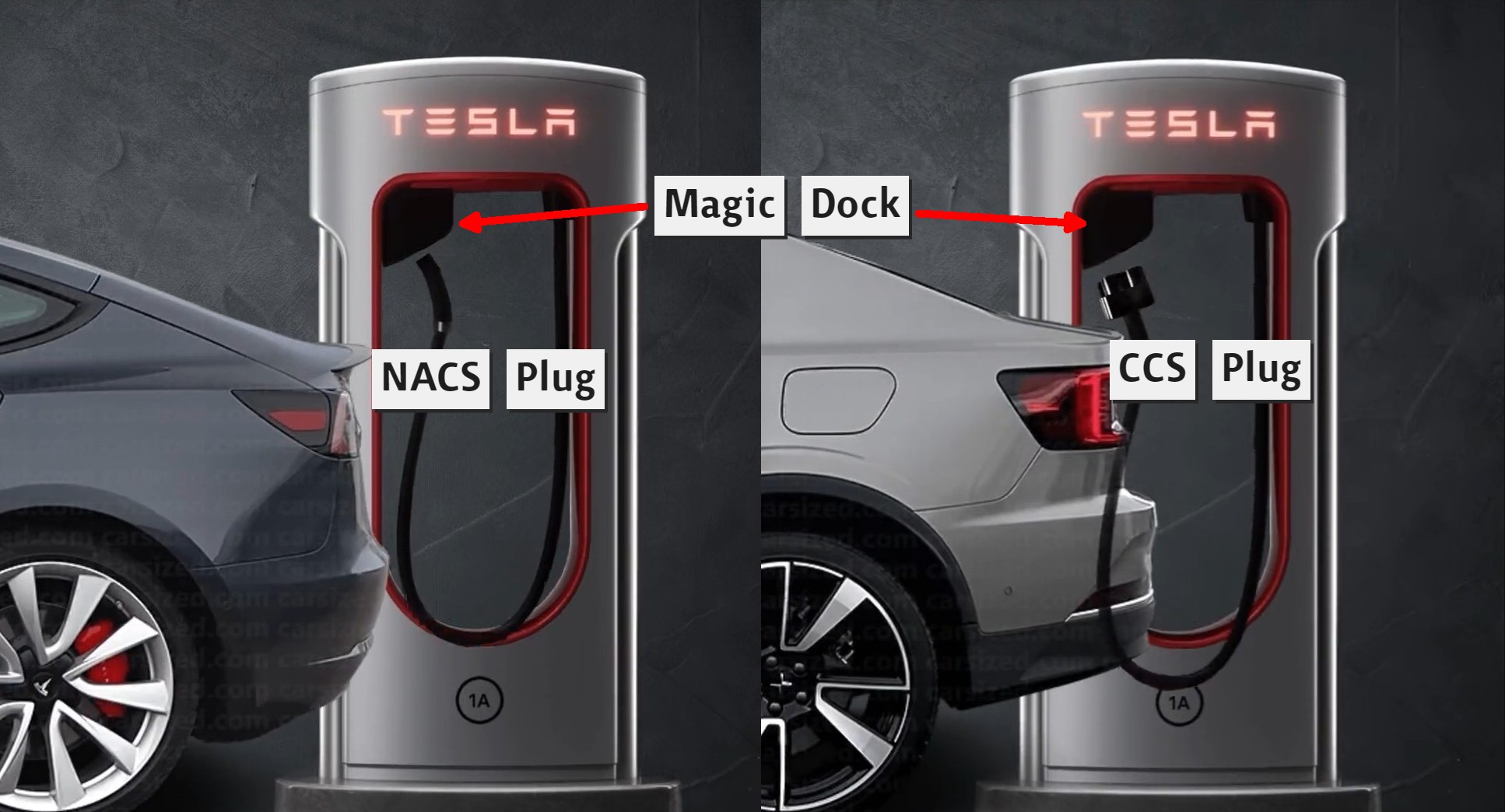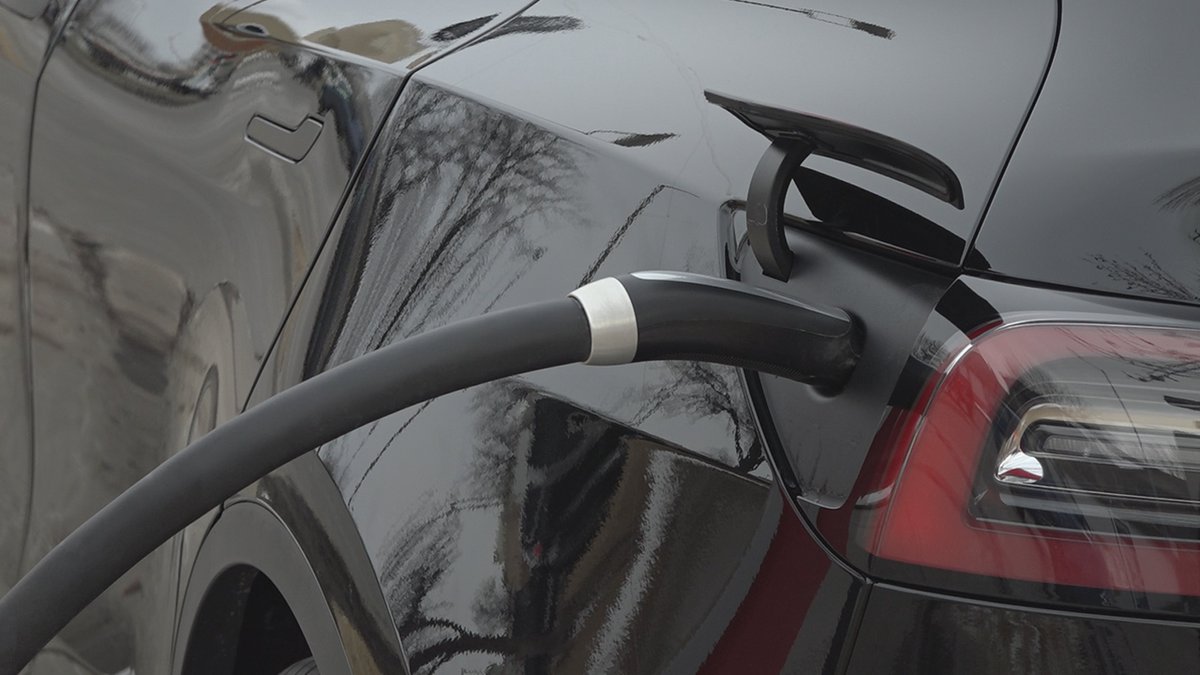How Tesla’s Magic Dock Intelligent CCS Adapter Might Work in the Real World
Tesla is bound to open its Supercharger network to other electric vehicles in North America. Nevertheless, its NACS proprietary connector makes it more difficult to offer services to non-Tesla cars. To solve this problem, Tesla has devised an intelligent adapter to provide a seamless experience no matter the car’s make or model.
As soon as it entered the EV market, Tesla understood that EV ownership is closely connected to the charging experience. This is one reason why it developed the Supercharger network, offering a seamless experience to Tesla owners. Nevertheless, it’s got to a point when the EV maker must decide whether it wants the Supercharger network locked to its customer base or open the stations to other EVs. In the first case, it needs to develop the network by itself, whereas, in the latter, it can tap into government subsidies to speed-up deployment.
Opening the Supercharger stations to other EV brands could also turn the network into an important revenue stream for Tesla. That’s why it slowly allowed non-Tesla vehicles to charge at Supercharger stations in several markets in Europe and Australia. It wants to do the same in North America, but there’s a bigger problem here: the proprietary connector.
Unlike Europe, where Tesla uses the CCS plug by default, in North America, it hopped to impose its charging standard as the North American Charging Standard (NACS). Nevertheless, Tesla needs to make sure the stations can also serve non-Tesla vehicles if it wants to access public funds to extend the Supercharger Network.
This presents additional challenges because having dual-connector chargers is not economically efficient. Instead, the EV maker wants to use an adapter, not much different from the one it sells as an accessory to Tesla owners, to allow them to charge at third-party stations. Nevertheless, a classic adapter was far from practical, considering it could get lost or stolen if not secured to the charger. That’s why it invented the Magic Dock.
The Magic Dock is not new as a concept, as it was discussed before, most recently when Tesla accidentally revealed the location of the first CCS-compatible Supercharge station. The Magic Dock is a double-latch adapter, and which latch opens depends on what EV brand you want to charge. If it’s a Tesla, the lower latch opens, allowing you to extract the small, elegant NACS plug. If it’s a different brand, the Magic Dock will open the upper latch, which means the adapter will remain attached to the cable and offer the right plug for a CCS vehicle.
Twitter user and EV enthusiast Owen Sparks has made a video showing how the Magic Dock might work in the real world. He based his video on the leaked picture of the Magic Dock in the Tesla app, but it makes a lot of sense. Whatever the car brand, the CCS adapter is always secured, either to the NACS connector or the charging stall. That way, it’s less likely to get lost while providing seamless services to both Tesla and non-Tesla electric cars.
EXPLAINED: Tesla Magic Dock ??
Magic Dock is how all electric vehicles will be able to utilize the Tesla Supercharging Network, the most reliable charging network in North America, with just one cable.
Tesla Accidentally Leaks Magic Dock Pic and the Location of the First CCS Supercharger
Tesla might’ve accidentally leaked the location of the first Supercharger station offering CCS compatibility for non-Tesla EVs. According to hawkeyed enthusiasts in the Tesla community, that would be in Hawthorne, California, close to Tesla’s Design Studio.
Tesla has been talking for a long time about opening up its Supercharger network to other brands, with a pilot program already working in Europe. The Supercharger network is arguably one of Tesla’s biggest assets and one of the main factors enticing people to buy its electric vehicles. Having its own charging network, the best out there, no less, is incredibly useful for Tesla and one of its unique selling points. So why would Tesla want to grant access to its network to other competitors?
That’s a good question, with the most obvious answer being that Tesla’s declared goal is to accelerate EV adoption and save the planet. Just kidding, it might be so, but money is also a factor, an even more important one.
Not necessarily the money earned from selling electricity, since Tesla claims it only charges a small premium over what it pays to the energy providers. But, more importantly, the money offered by governments as incentives to companies installing charging stations.
To qualify for this money, at least in the U.S., Tesla must have its charging stations open to other electric vehicles. This is easier in Europe and other markets where Tesla uses the CCS plug like everybody else. In the U.S., though, Superchargers are fitted with Tesla’s proprietary plug. Tesla might’ve open-sourced it as the North American Charging Standard (NACS).
Post time: Nov-21-2023

 Portable EV Charger
Portable EV Charger Home EV Wallbox
Home EV Wallbox DC Charger Station
DC Charger Station EV Charging Module
EV Charging Module NACS&CCS1&CCS2
NACS&CCS1&CCS2 EV Accessories
EV Accessories


